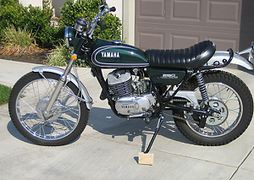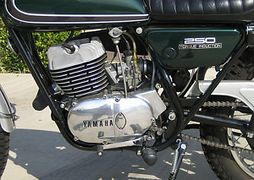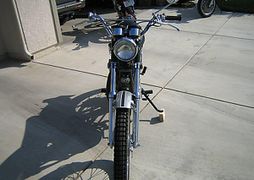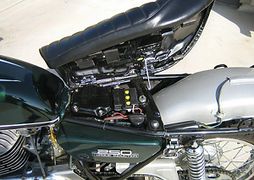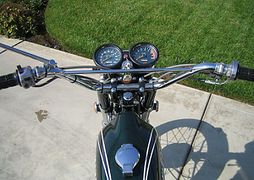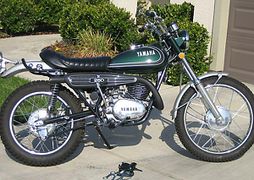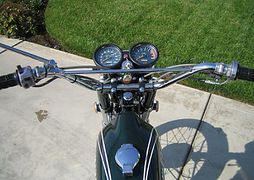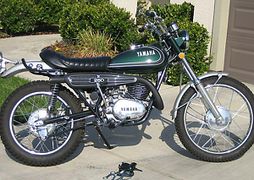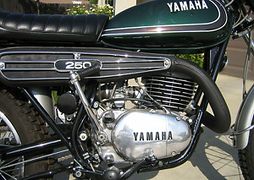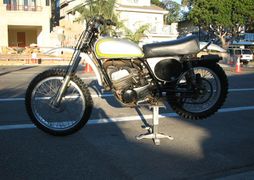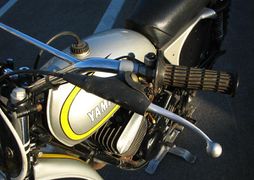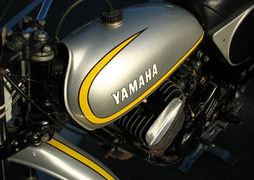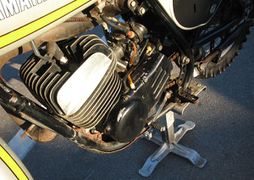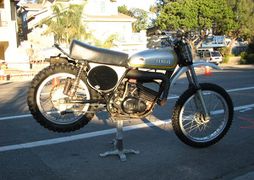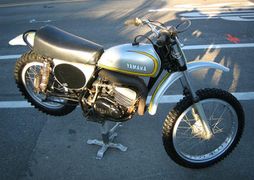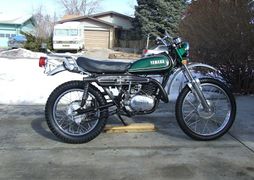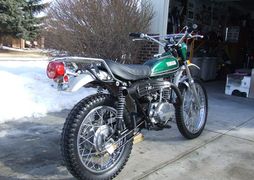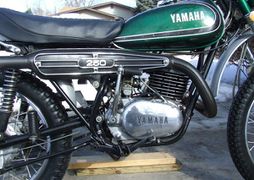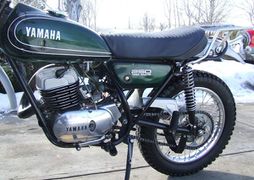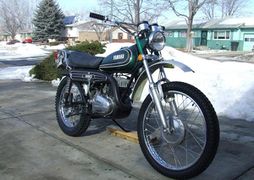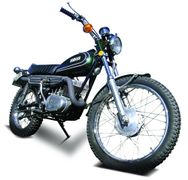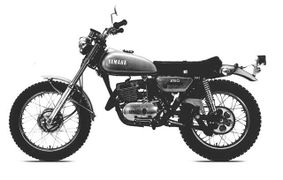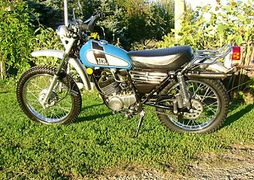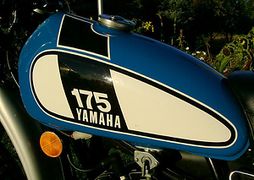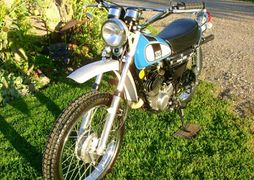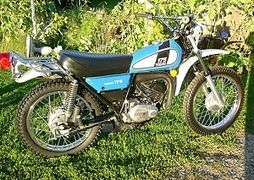Yamaha DT3
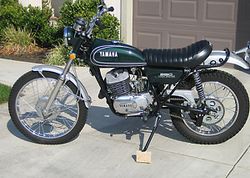 |
|
| Yamaha DT-3 250 | |
| Manufacturer | |
|---|---|
| Production | 1975 |
| Class | Enduro |
| Predecessor | Yamaha DT2 |
| Engine | Two stroke, single cylinder, air cooled |
| Bore / Stroke | 71.1mm x 71.1mm |
| Compression ratio | 6.8:1 |
| Horsepower | 24.0 HP (17.9 KW) @ 7000RPM |
| Torque | 17.7 ft/lbs (24.0 Nm) @ 6000RPM |
| Spark Plug | NGK B8ES |
| Transmission | Gear box: 6-Speed Final Drive: Chain |
| Suspension | Front: Telescopic forks Rear: Dual shocks |
| Brakes | Front: Drum Rear: Drum |
| Front Tire | 3.25-19 |
| Rear Tire | 4.00-18 |
| Wheelbase | 54.69 inches (1389 mm) |
| Length | 82.72 inches (2101 mm) |
| Width | 35.0 inches (889 mm) |
| Seat Height | 32.01 inches (813 mm) |
| Weight | 122.0 kg (wet) |
| Recommended Oil | Yamalube 10w-40 |
| Manuals | Service Manual |
The Yamaha DT-3 250 was a Two stroke, single cylinder, air cooled Enduro motorcycle produced by Yamaha in 1975. Max torque was 17.7 ft/lbs (24.0 Nm) @ 6000 RPM. Claimed horsepower was 24.0 HP (17.9 KW) @ 7000 RPM.
Engine
A 71.1mm bore x 71.1mm stroke result in a displacement of just 246.0 cubic centimeters.
Drive
The bike has a 6-Speed transmission. Power was moderated via the Wet, multiplate.
Chassis
It came with a 3.25-19 front tire and a 4.00-18 rear tire. Stopping was achieved via Drum in the front and a Drum in the rear. The front suspension was a Telescopic forks while the rear was equipped with a Dual shocks. The wheelbase was 54.69 inches (1389 mm) long.
1973
- Starting Engine#: DT1F-135101
1975 Yamaha DT-3 250
The DT's engine was your basic 250cc air-cooled two-stroke single that was dirt reliable plus dirt cheap to operate and maintain. Fed by a 26mm Mikuni carburetor and with 6.8:1 compression, the 246cc (15 seven ports on its "Torque Induction" two-stroke engines). Along with the standard intake, exhaust and transfer ports, Yamaha used an additional two transfer ports along with holes in the piston skirt. These ho would normally be covered by the skirt. This small detail resulted in a slight increase in power, and better throttle response than Yamaha's pre 1972 engines.
| ||||||||
